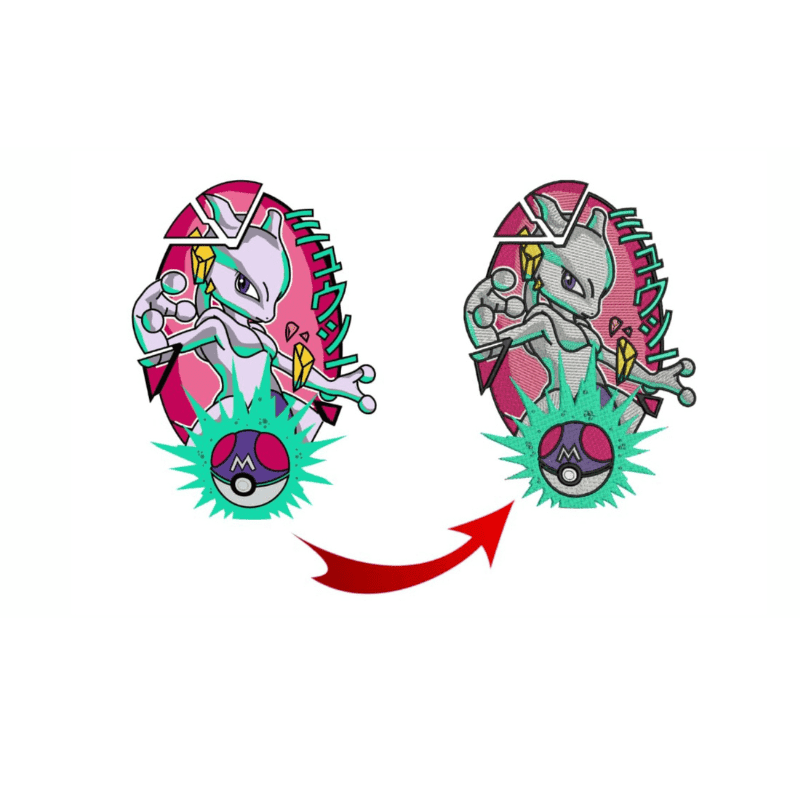Streamlining the Art of Needlework Digitizing: Step-by-Step Overview
As modern technology proceeds to breakthrough, the digitization process has ended up being a lot more accessible, enabling fanatics to bring their elaborate styles to life with convenience. In this overview, we will certainly untangle the complexities of needlework digitizing, breaking down each action carefully to streamline the procedure and encourage both newbies and experienced embroiderers alike.
Recognizing Needlework Digitizing Software Program
Embroidery digitizing software application serves as an essential device for transforming complex styles right into electronic layouts suitable with embroidery machines, assisting in accurate stitching and customization. This specific software application enables customers to import different photo documents formats, such as JPG or PNG, and transform them right into embroidery machine-readable formats like DST, EXP, or PES - Digitizing for Embroidery. By making use of functions like stitch modifying, padding options, and string shade option, digitizing software makes it possible for users to control every element of the layout process
Furthermore, advanced needlework digitizing software program supplies tools for creating complex styles, changing stitch density, and incorporating elaborate details. Individuals can additionally preview the style before stitching it out, ensuring precision and reducing mistakes. In addition, several software application provide automated features that assist enhance the digitizing process, conserving time and effort.
Recognizing the capacities of needlework digitizing software application is necessary for accomplishing top quality lead to needlework jobs. By grasping this device, needlework enthusiasts and experts can unleash their creative thinking and bring elaborate designs to life with accuracy and efficiency.

Selecting the Right Layout File
After familiarizing yourself with the capacities of needlework digitizing software application, the next critical action in the procedure is choosing the best design documents for your project. Digitizing for Embroidery. When picking a style data for embroidery digitizing, it's important to take into consideration the intricacy of the layout, the dimension of the end product, and the sort of textile you will be dealing with
For complex layouts with fine details, a high-resolution picture or vector file is suggested to guarantee that the embroidery machine can precisely replicate the style. Furthermore, the size of the final item plays a significant duty in picking the ideal layout data. Larger styles might call for greater resolution data to maintain clarity and intensity.
Additionally, the sort of textile you will be stitching on affects the option of design documents. Various textiles may call for adjustments in the layout data to guarantee that the stitches are correctly aligned and the style appears as intended. By carefully choosing the best layout file based upon these factors, you can set on your own up for an effective embroidery digitizing procedure.
Digitizing Tools and Methods
Using specialized software application and precision strategies, digitizing tools are essential in changing detailed designs right into embroidery-ready data. Embroidery digitizing software, such as Wilcom, Hatch, or Embrilliance, gives the necessary platform to transform art work right into stitch data. These programs use functions like stitch modifying, padding options, and text tools to ensure the layout translates seamlessly onto material.
Among the essential techniques in digitizing is creating a clear course for the needlework machine to adhere to. This entails digitizing each aspect of the layout with accuracy, identifying stitch kinds, densities, and directions. By utilizing tools like digitizing tablets or software-specific plugins, embroiderers can accomplish a high level of accuracy in their digitized designs.
Furthermore, understanding the art of rug sewing is essential for creating high quality needlework. Underlay sewing stabilizes the material and develops a structure for the layout, guaranteeing that the end product is both visually enticing and long-lasting. By understanding these digitizing devices and techniques, embroiderers can raise their my explanation craft and bring detailed styles to life with accuracy and performance.
Tailoring Stitch Kinds and Instructions
The option of stitch kinds can considerably influence the overall look and texture of the stitched layout. By strategically combining these stitch types, embroiderers can achieve deepness and dimension in their layouts.
In addition, the direction of stitches plays a crucial duty in boosting the aesthetic charm of the final embroidery. Numerous stitch directions can include structure, highlight certain elements, and create aesthetic interest. Transforming the angle of stitches can mimic motion or all-natural patterns like fur or feathers. By explore different stitch angles and patterns, embroiderers can bring their designs to life with exceptional detail and details. Mastering the art of customizing stitch types and instructions empowers embroiderers to release their creative thinking and raise the high site link quality of their work.
Testing and Refining Your Digitized Layout
To ensure the accuracy and quality of your digitized design, extensive testing and refinement are vital action in the needlework digitizing procedure. When you have finished the digitization of your design, it is important to evaluate it before waging the actual needlework. Evaluating permits you to recognize any kind of potential issues such as thread breaks, sew thickness troubles, or design distortions that might impact the outcome.

After screening, it is important to improve your digitized layout based upon the comments from the examination sew-out. This may include tweaking stitch setups, changing densities, or making modifications to the general layout to accomplish go the desired outcome. By iterating via testing and improvement, you can adjust your digitized style to perfection before moving on with the actual embroidery process.
Final Thought
In verdict, understanding the art of needlework digitizing requires an extensive understanding of the software program, selecting the right design data, using digitizing devices and strategies, customizing stitch types and directions, and screening and fine-tuning the digitized layout. By following these steps, embroiderers can streamline the digitizing process and create top quality embroidered styles with precision and effectiveness.